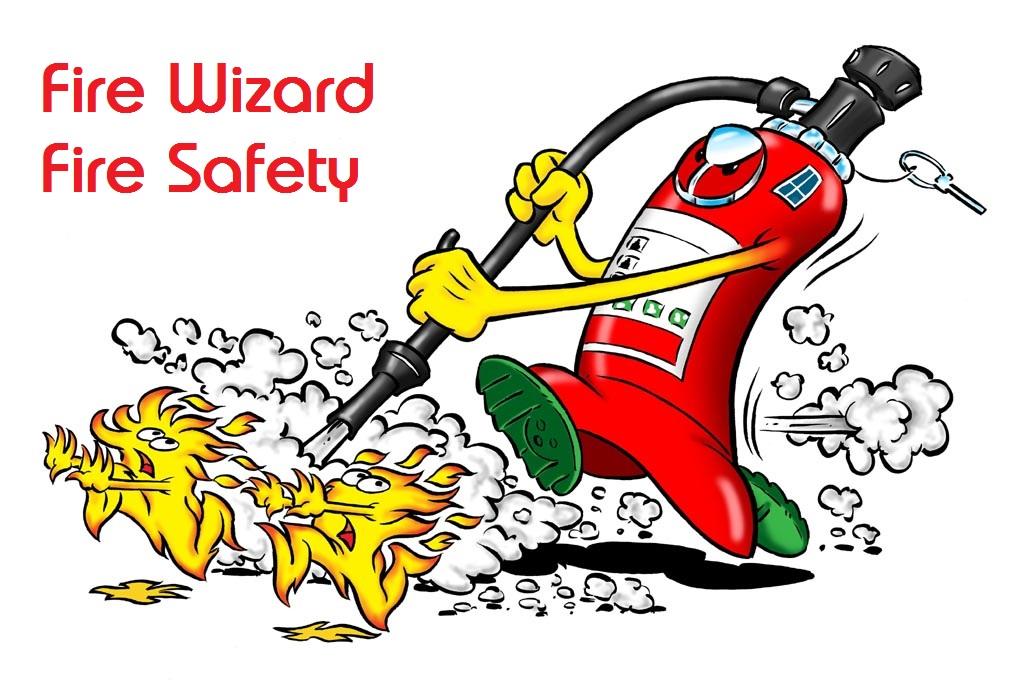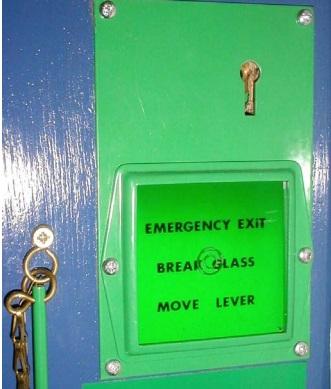-
Posts
2,570 -
Joined
-
Last visited
Everything posted by AnthonyB
-
A fire door may have been fitted, but it doesn't need to be.
-
HI, I'd have to dig it out and redact certain bits as it was paid consultancy for a client, but I'll see what I can do.
-
No unless you are a very specific sector such as prisons. They have contributed to too many deaths over the years, even when the key has been attached to the door in a glass fronted box. There are plenty of other solutions available now, the nearest you could get is the Emergency Fastening (Frangible) from Imperial Locks http://www.imperiallocks.co.uk/fire.htm
-
You should get a refund as the FRA is not correct. If purpose built flats you do not need smoke alarms in the common areas (and if for some reason, such as insufficient compartmentation they were indicated they wouldn't be suitable either). Fire doors is a different matter - if the original notional fire doors from the flat build have been replaced then either you need new fire doors or a full fire detection & alarm system (not just smoke alarms) providing sufficient cover for full evacuation of the block. Purpose built flats guide: http://www.local.gov.uk/c/document_library/get_file?uuid=1138bf70-2e50-400c-bf81-9a3c4dbd6575 Conversions guide: http://www.rla.org.uk/docs/LACORSFSguideApril62009.PDF
-

Emergency light testing on automatic sensor lights (with no switches)
AnthonyB replied to a topic in Emergency Lighting
Quite a lot of EL installations have no test switches, even new ones where installed by non specialist electricians. If your fixed electrical installation is subject to periodic inspections and is satisfactory then there are no risks from using the breakers inside the distribution boards, if they were that unsafe there is something very wrong (& illegal). Your breakers need to be labelled clearly so you switch off the lighting circuits as oppose to a ring main (which might have your PC's plugged into) Testing is within the remit of your site person, but for peace of mind you may wish to get an electrician to take him through it. To avoid using the breakers a test switch can be installed next to the distribution board if you so wish. You can do the annual test in house if you so wish -
You should consult the battery manufacturer for advice as several types of lithium cell actually do not contain nor liberate free lithium metal and do not need a Class D extinguisher. For example we researched first aid fire fighting requirements on behalf of one of the main UK automotive lithium cell manufacturers in the UK and the result was they only required ABC Powder & Water Mist extinguishers.
-
Simple answer - no if it is required as a means of escape.
-
I'm assuming it's the thumb turn escape mortice deadlock where you have to complete two full rotations of the turn to unlock the door instead of one or less. I don't like these personally as it's easy to think the door is locked and the turn failed to release the lock if you don't know how to open it. Depending on the location of the door, signage and the number & type of people using it the thumb turn type lock remains acceptable subject to risk assessment, although certain storey and final exits do require an EN approved exit device.
-
Lazy installation, the installers should have ensured the LED was visible through the diffuser of the fitting
-
Grade D system - any mains powered interlinked alarms with battery back up by a recognised brand would suffice - Aico, EI Electronics, etc Grade A system - To save on cable costs a twinwire system would suit well (one cable can have both sounders and detectors/call points on instead of having separate cables for each), the Apollo Alarmsense equipment using C-TEc or Kentec control panels are common combinations used for this. Because it is a conversion you need a Grade A system with control panel, sounders, detectors, etc. Only purpose built flats don't need a communal fire alarm and in these there is no fire alarm panel, the detection is linked directly to the smoke vent control panel
-

Does Fire Alarm System Have To Comply With Current British Standards
AnthonyB replied to a topic in Fire Alarm Systems
Plenty of existing systems don't meet the current British Standard - the acceptability of this is risk based dependant on your premises, usage & occupancy against the non compliance - every existing system didn't become illegal in 2013 and need upgrading. It's important to know in what way it doesn't meet the BS as this affects how critical it is, find that out and post back. -

Wiring up/Testing of Emergency Lighting
AnthonyB replied to DJSheridan's topic in Emergency Lighting
Escape lighting should not be on it's own circuit unless of the maintained type or part of a central battery system as it should operate on local circuit failure. After all escape lighting is still emergency lighting, just that provided specifically for the purposes of providing sufficient illumination of exit routes to allow safe egress. Many older installations have to be tested by tripping the lighting circuit, obviously care needs to be taken with respect to the hazards from lack of normal lighting, but it's done up and down the country every day. Proper testing points should indeed be provided, but it's not realistic for it to happen overnight. -
If you want it to have any appreciable fire resistance, yes. There's no point upgrading the rest of the cupboard when the doors and hinges will still fail after a few minutes.
-
It depends on the size of the unit, some small lock up units would need no alarm as a verbal warning would be readily heard throughout the premises. Larger units would require a basic category 'M' fire alarm system (call points & sounders only) providing - incoming tenants would determine in their risk assessment if their use & layout required automatic detection adding. Of course if these units were built in the last 20-odd years they would usually have had a category 'M' fire alarm already installed when built if they were big enough as a requirement of Building Regulations so the lack of one isn't automatically an issue
-

Is there a minimum period a fire alarm panel battery must be charged?
AnthonyB replied to a topic in Fire Alarm Systems
You are being ripped off. The industry standard for battery replacement is 4 years unless it fails before then (which it shouldn't) -
I'm guessing by intelligent controller you mean the self testing emergency lighting systems where each fitting is monitored and tested via a central control panel. The traditional versions are where each fitting has its own batteries and test chip, new versions work like addressable fire alarms with loop powered fittings from a central power supply at the control panel.
-
1983 is a museum piece (and as a collector of old/historical fire extinguishers something I'd probably be after!) and will be unservicable. ABC Powder is a quick fix for everything other than cookers, but messy and frowned upon. Water mist covers all likely domestic risks - solids/furnishing, cooking oils and electrical appliances. It's more expensive, but is the better option. It takes a bit to get your head around the water and electrics bit, but I have a client who effectively and safely used a 3 litre water mist extinguisher on a live 415v industrial drier fire when the traditional extinguisher (2 kilo CO2) failed miserably so it's not all talk!
-
You need to use a fire extinguisher maintenance company as you need special tools, charging adapters, O-rings and nitrogen cylinders. You may find it's actually cheaper to buy a new one off Safelincs!
-
You need to use a fire extinguisher maintenance company as you need special tools, charging adapters, O-rings and nitrogen cylinders. You may find it's actually cheaper to buy a new one off Safelincs!
-

Amazing performance of 1L Water Mist Extinguisher
AnthonyB replied to Bodstrup's topic in Fire Extinguishers
Water Mist extinguishers do not have the suitable minimum fire ratings (5A/34B) under the mandatory Boat Safety Scheme and your boat could fail it's safety certificate examination and be prohibited if you use these. You could of course have them in addition to the mandated extinguishers as all your points are most valid -
Building Regulations compliance at the time of the most recent conversion will have been by the provision of the external stair. The stair should have been kept in good repair over the years (& it would be interesting to see who should have been doing this according to the leases). If it's in poor condition it will need to be repaired or replaced - you can't simply remove it as this will require a Building Control submission and you will be told to either replace the stair or provide an accepted alternative (e,g, sprinklers). It would be less disruptive to do external work & repair/replace the external stair.
-
Some manufacturers of Grade D systems do provide call points. If you have a Rafiki (Fike) Twinflex fire alarm panel it is a BS5839-1 commercial fire alarm panel and call points can be added (they must be genuine Twinflex call points or they won't work - you need to get a fire alarm specialist to do the work). The number of floors you have means that under the benchmark guidance you should have a grade A system (which the Twinflex is) and that means call points will be required.
-
If it's an emergency exit then there should be a green (sometimes white) break glass call point that acts as a double pole isolator that will disengage the door in case other release methods fail (as has happened here). If there isn't then you've two problems and you need an electrician with experience of access control systems to repair the normal release button and add an emergency release break glass.
-
Plenty of commercial premises have fire exit doors that double as delivery entrances and I don't think you are going to get what you want this way. You obviously don't have any fire safety concerns and this is an access/land civil law issue - why is it a problem?
-
As Tom says there is a limit to what you get for free - you would need to instruct me formally (& pay) for that amount of depth.


